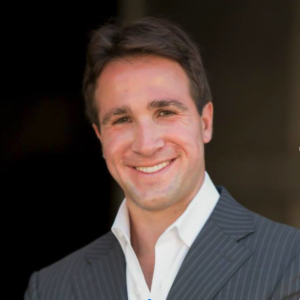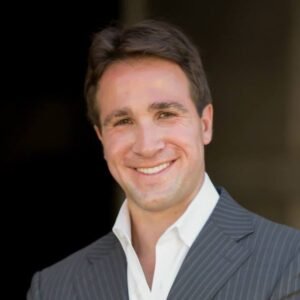I recently spoke to Chase Dimond, co-founder of Boundless Labs, a leading ecommerce email marketing agency. Boundless Labs has helped clients send hundreds of millions of emails resulting in over $35 million in email attributable revenue. Chase has also helped acquire millions of email subscribers for brands he has personally built.
Adam: Thanks again for taking the time to share your advice. First things first, though, I am sure readers would love to learn more about you. How did you get here? What attracted you to the world of email marketing?
Chase: Hey Adam, thanks for having me! I got my start in marketing at the age of 14 years old. I taught myself guerilla marketing to raise money and awareness for Crohn’s disease as I was diagnosed with the disease at the age of 13 years old. I was sick for a year due to the lack of awareness of the disease. Through raising tons of awareness and funding for the disease, I was asked to join the board of the charity. At the age of 16, I became the youngest board member and served a 6-year board term. Throughout college, I had more internships than anyone I knew as I had to help my parents pay for my tuition. It was through the many internships I had, that I fell in love with email marketing. The thing that attracted me the most to email marketing is that you can have 1:1 conversations at scale in an automated manner. What I mean by that is: As an email marketer, if you can convince someone to open your email, you have their attention and can serve them content that feels personal (if done correctly). The better your content looks and sounds, the longer you get to captivate your list’s attention. The longer you captivate their attention, the more chances you have to have an impact (educating, engagement, revenue, and so on). While there is and always will be external distractions, there aren’t any distractions within an email. With social media for example (for better or worse), if someone sees an ad, they also have other distractions happening in the forms of friends and family members’ organic posts. An ad on Facebook might be squeezed between a post from your best friend and your aunt. Whereas with email, it’s blank space outside your brand messaging. After I graduated college, I used cold email and organic social media to drive hundreds of thousands of people to the products and services I was building. I ended up becoming so successful and obsessed with email, that I ended up building an email newsletter business much like The Hustle, Morning Brew, and The Skimm. I grew this email travel series I built from 0 to 500,000 email subscribers in 10 months with almost no traditional paid advertising. Fast forward to where I am today, I co-founded an ecommerce email marketing agency called Boundless Labs. Since launching Boundless Labs in June of 2018, we’ve helped our clients send hundreds of millions of emails resulting in over $35 million in email attributable revenue. A few of our current and previous clients include The Chive, IBEX, Original Grain, TUSHY and Vinyl Me Please.
Adam: What should all entrepreneurs understand about email marketing? What is your best strategic advice?
Chase: Email marketing IS NOT DEAD. I swear every year the headline of “email marketing is dead” gets so much attention. It’s honestly just clickbait at this point. As a result, email hasn’t ever become “sexy” or super mainstream, meaning not many brands have decided to invest enough attention or capital towards it. Which is unfortunate, but also okay. We have been able to crush it for our clients and at the end of the day that’s all that matters.I think many people would be surprised to learn how profitable email marketing as a channel can be if executed properly. Most of our clients are generating 20%-30% of their total revenue from our email marketing efforts. We mainly work with 7 and 8 figure ecommerce brands so we’re talking hundreds of thousands to millions of dollars in revenue each year for each of our clients that is being generated from email marketing. If that doesn’t get you excited about the opportunity of email, I’m not sure what will. Think about it, you’ve already paid to acquire subscribers and customers, why not provide value in the hopes of driving engagement and ultimately revenue. My best strategic advice would be to spend a quarter focused on improving (or starting) your email channel. The 3 following tips are what I call my email bible.1. At least 20% of your revenue should come from email. For us, most of our clients generate 25%-30% of revenue from email. We even have some clients where 40%+ of their total revenue is from email.
2. Aim for a healthy revenue split amongst your campaigns and flows (email automation).
3. You MUST leverage list segmentation. The quickest way to end up in the spam folder is by batching and blasting everyone on your list.
If you send emails daily or multiple times per week, I recommend a 30 to 60 day engaged segment.
If you send once a week or even monthly the segment, lengthen 30 to 60 days to 75, 90, 120+ days to be more inclusive.
Adam: What are your best tactical tips?
Chase: Split your attention amongst campaigns and flows (email automation). Start with sending 1 campaign email per week. If the open rates look good, unsubscribes and marked as spam are kept low, try sending 2 campaign emails per week. Find the equilibrium between sending enough emails per week where you can drive strong engagement and revenue without having a crazy amount of churn (unsubscribes, marked as spam, etc). On the flow side, start with 3 core flows: Welcome Series for Non-Buyers, Abandoned Checkout, and Customer Thank You. These flows are a part of my core foundational emails because they drive revenue and frankly, subscribers have come to expect these emails. Welcome Series Overview: These emails make your subscribers accustomed to engaging with your brand via email and set the tone of your relationship.Abandoned Checkout Overview: Doing this will help you recover and convert more of your most engaged visitors that you’re driving to your website.Post Purchase Overview: Show appreciation to your customers by saying thank you. This helps strengthen your bond and reduces buyer’s remorse.
Adam: What should all marketers understand about email marketing? What should marketers read to become as adept at email marketing as possible?
Chase: I want to focus on email deliverability here. It is one of the most important aspects of email but it’s largely a topic people overlook or quite frankly, don’t even know about at all. In all honesty, basic solves 99.9% of deliverability issues. Simple mistakes are the cause for most deliverability issues. The biggest key is consistency. Inbox providers want you to be consistent with sending to engaged. Most if not all deliverability issues are caused by sending to unengaged. To me, that is a very easy mistake for anyone to make, even people who have years of marketing experience. The one thing I have noticed with Email is before Inbox providers really filtered emails or developed a sophisticated algorithm it was all about quantity vs quality. Now the tables are reversed and it’s the complete opposite with inbox providers. Granted this change was not overnight and took years, but even still for anyone new to Email Marketing, it’s an easy mistake to make. Two quick tips to help improve your email deliverability.
Go into your g suite admin and create a G+ profile for your email and then edit your profile and add a profile photo. It will display nicely and make the emails look even more personalized. I’d also suggest using gravatar too.
Be sure to authenticate your emails with custom authentication within sendgrid (or whatever platform you’re on) so you don’t send “via https://sendgrid.net”. This is pretty important because Microsoft Office might start blocking messages sent “via” or on behalf.
As for what people should be reading, I started my own newsletter because I was frustrated by the lack of exceptional resources available pertaining to ecommerce email marketing. Most resources I find are sharing tips that worked years ago. I’m focused on sharing high-quality guides geared towards topics that work today and will work for the next couple of years.
Adam: What are your best tips on how to build an effective email list?
Chase: Currently I’m deep into the ecommerce world so I’ll focus on how our clients build their lists. First, the most popular list building technique is leveraging subscription forms on your website. This includes things like popups, flyouts, and embedded forms. The aim here is to collect email addresses for traffic that visits your website (for folks not already on your list). Second, our clients acquire subscribers when people go through the checkout process on their website. Third, a lot of our clients have referral marketing or ambassador programs setup. This helps encourage their subscribers and customers to share your brand as they are incentivized to do such. Think the whole give to get model that Uber, Postmates and the other big app companies have been leveraging for years.
Last, our clients leverage solo or partner giveaways to drive list growth. Note: This can be a major hit or miss. When done effectively, this is one of the most cost-effective acquisition channels.
Here are a few things to consider when running a successful giveaway:
What is the goal of the giveaway? Awareness? Conversion?
What are you giving away? Is it aligned with your brand?
Who are the partners you’re bringing on? Do they share a similar audience to yours but sell non-competitive products?
Adam: Buying lists is a popular and controversial topic. What do you recommend and why?
Chase: This certainly is a popular and controversial topic. Personally, I’m all for sending cold emails. I’ve acquired over 1 million subscribers, community members, and users via the likes of cold email. However, when it comes to buying lists, it’s been a major hit or miss for me. I’ve had some success purchasing lists but I’ve also lost a lot of money buying lists. I’ve had the most consistent success from building my own internal tools that aggregate data from social media platforms based on people’s interests. For example, with the email travel series I grew to 500,000 email subscribers, we built a tool that aggregated data from Instagram which was massively successful. We got the email addresses of people who posted with travel-related hashtags, people who followed travel accounts, and even people who geotagged popular tourist destinations. We ended up with 5 million email addresses and sent highly personalized emails at scale inviting people to join and participate in the free travel community we built. People loved it! We were hitting 50%+ open rates and 10%+ click-throughs and replies. However, going back to the question of buying lists and my recommendations. I recommend you proceed with caution. You really need to vet and audit the company you are considering purchasing lists from. Ask to speak to previous list buyers. Ask for insight and data on how previous campaigns performed. Ask about how the list originated and how many times it’s been sold. Ask if they have any money-back guarantee policies if the list ends up being garbage. It’s also super important to have the ability to send emails in a manner that hits user’s inboxes. If you haven’t ever done cold email, I would not recommend buying a list. I think buying a list should be reserved for people with cold email experience. Otherwise, you’re going to be wasting money. People often don’t realize and understand how difficult it is to inbox at scale. It’s easy to send emails but it’s hard to get them into the primary inbox.
Adam: How can brands best leverage email during COVID-19 to drive engagement and revenue?
Chase: I strongly believe now is the time to double down on email. Brands who put the community first now and stay top of mind are going to win both now and when things get better in the future. Brands that are being human and asking for help are doing well. Friends and family promotions are also working well.
Here are some campaign buckets to promote:
Giveaways
Gifting
Blog/Educational Content
Pick-me-up shopping
Retail therapy
Time to treat yo self
Self + home improvement time
Connecting online events (community-based)
Adam: More broadly speaking, what are your best sales and marketing tips?
Chase: I think the most important tip with sales and marketing is being authentic. Customers, prospects, clients are so good at sensing when something and someone is authentic or not. Coming from a genuine place with everything you do and put out is so important. People are attracted to others that are real. This is a huge way that I’ve connected with so many exceptional others. I always am who I am, and I always treat others with respect and honesty. This ties into a saying I came up with: When your network wants to see you win, you win. I attribute a ton of my success to relationships I’ve built that honestly steamed from me being authentic and kind. This is exactly how you should approach your sales and marketing. I also think having a platform where you share valuable insights is hugely important. This could be an email newsletter, a blog, a podcast, and so on. Content marketing presents a massive opportunity for so many great things to happen. Content marketing is great for lead generation. Content marketing is great for establishing yourself and your business as experts. When you invest into sharing with the world, others will invest into working with you. At this point for my agency, every prospect we get is an inbound lead. I’m averaging 1-2 qualified inbound leads per day. They all find me through my social media posts or someone forwards them my weekly email where I send high-quality email guides. Note: None of this happened overnight. This has been a few years in the making. The biggest mistake I see people make is they start and then stop soon after because they haven’t generated any leads. The market favors and rewards consistency.
Adam: In your experience, what are the defining qualities of an effective leader? How can leaders and aspiring leaders take their leadership skills to the next level?
Chase: This question hits close to home for me right now as this is something I’ve been spending a lot of time working and reflecting on. Over the past few months, and more so, the past few weeks, I truly (and finally) feel like I’ve been evolving as a leader. I personally am a perfectionist and as such, have always required that of my partners and my team. Which isn’t fair nor is it productive (for anyone involved). With most of my businesses, it’s often been my name and reputation on the line, so I’ve always taken things extra serious. I’ve always cared about my reputation above all else. To me, reputation is equivalent to longevity, where money and other things come and go. The single biggest eye-opener for me in putting more trust into my team and empowering them to lead, came as a result of my wife and I having our baby. I’m a workaholic and love what I do, but I love our little baby girl so much and wanted to spend every second with her and my wife. This has forced me to take a step back and let others step up. With all the above as context, here’s what I’ve learned. I strongly believe effective leaders must lead my example. All too often (myself included) we want to tell others what to do and how to behave, but yet we can’t and don’t follow our own advice. There needs to be consistency in what we say and more importantly, in what we do. I also think having humility is so underrated. As leaders, we often have so much pride that we put on a front that we don’t need advice and that everything is always okay. I’ve noticed that the more brutally honest I can be with myself about wins, learnings, and losses, that it allows my team to be more direct with me, and more honest with themselves as well. I think having outward appreciation for those around us that help make our businesses, and therefore lives better, is so important. I have been practicing ongoing and authentic gratitude through the form of positive feedback with my team. Genuinely building my team up has been huge for pushing the organization forward. My team has never been more confident and energized. To become a great leader, I think it’s crucial to understand (and admit) your strengths and weaknesses. I think it’s super important to have people to hold you accountable (partners, team members, mentors, and so on). I also think it’s imperative to have short, mid, and long-term goals. You have to have something you’re working towards or else it will be hard to align the team. My team is now at a place where they are bringing their own goals and aspirations to the organization which has been one of the biggest forces for driving internal and external business growth. There has been no better feeling as a leader than when I have my weekly 1-1 with team members and hear about things people have been working on that are so much bigger and better than the tasks assigned to them.
Adam: What is the single best piece of advice you have ever received?
Chase: In our age of information abundance, access to knowledge is rarely a competitive advantage.
Share your best ideas. Building an audience will do more for your career than keeping ideas to yourself.









